How to properly grow the Transfiguration grape variety?
This variety grapes - a real find for the gardener. It is unpretentious to care for and has large, tasty berries. The bunches usually reach one kilogram, and with proper care they may well grow up to three kilograms.
The "Transfiguration" variety refers to early ripening grapes, because the harvest is ready for harvest in 3-4 months after the formation of the bunch. Grapes have a yellowish-pink hue, they are fleshy and juicy, have a thin skin and an oval shape. And the sweet and sour taste will appeal to absolutely everyone.
Content:
- Advantages and weaknesses of the Transfiguration variety
- Propagation of grapes
- Correct planting of grapes
- Care Tips
- Controlling major pests
Advantages and weaknesses of the "Preobrazhenie" variety
Powerful bushes of grapes "Transfiguration" belong to the self-pollinated hybrid form. Fruiting occurs on both mother and grafted bushes.
The grapes are easily adaptable to climatic conditions and do not require intricate care.
This grape variety is distinguished by a high yield, including on the stepchildren's shoots. Full ripening of the crop occurs at the end of September. From one vine, you can get up to twenty kilograms of harvest.
The main advantages of Transfiguration grapes:
- Early ripening of the crop. If the berries have become soft, then they are considered fit for consumption.
- Berries grapes large and not prone to peas.
- The grapes are compatible with other varieties and are fairly easy to propagate.
- The grapes are able to withstand frosts down to -25 degrees.
- The berries are tasty and beautiful, they tolerate transportation well without losing their presentation.
There are much fewer weaknesses in grapes than advantages:
- Despite the frost resistance, the bushes should be covered for the winter.
- Grapes can be severely affected by pests, therefore, they require special protection throughout the growing season.
Propagation of grapes
Reproduction of grapes is carried out by cuttings and grafting. Rules cuttings grapes:
- The most favorable period for this procedure is spring.
- Cuttings should have about 2-3 eyes.
- The lower part of the cutting is removed so that a couple of millimeters remain under the peephole.
- Plants are placed in a solution of water and humate for a couple of days.
- Next, the cutting is placed in boiling paraffin (for 1 second), and then in cool water.
- Thick trunks are found in the rootstock and split to accommodate the cutting.
- The split site is tightly tightened with dense material.
Correct planting of grapes
The main nuances that you should know when landing:
- This variety is quite unpretentious and does not require fertile soil, however, nutritious soil is the key to a richer harvest.
- Watering should be carried out regularly, while waterlogging or drying out of the soil should not be allowed.
- The plot must be flat to avoid moisture stagnation. You should also choose a sunny place for planting, without through winds. The south side of the infield is best suited.
- Grapes do not need neighbors, because a powerful root system will rapidly develop and fight for nutrients with other plants.
How to plant grapes correctly:
- One of the main rules for a successful planting of grapes is high-quality seedlings. They should have white roots without any damage, as well as a green side cut. If the seedlings are frozen and the roots are damaged, then you should not hope for the success of the event.
- Before planting, the seedlings are soaked in water for a day, you can also treat them with a growth stimulant. The ends of the roots are trimmed a little.
- Seedlings are planted half meters from each other, so that subsequently the overgrown bushes have enough space.
- The deepening for planting must be done with a margin (twice as much as the roots themselves). A mixture of humus is placed on the bottom and sprinkled on top with a layer of earth. When planting a seedling, the root collar is placed on a level with the ground.
- Seedlings must be properly compacted in the soil.
- Each seedling requires watering with three liters of water.
Grape Care Tips
In order to get a rich harvest grapes, you should adhere to the tips for proper plant care:
- Watering the grapes should be private but moderate. This factor greatly affects the yield and size of the berries. Grapes are especially sensitive to moisture during flowering.
- In order to saturate the soil with useful substances, it is carried out mulching... This should be done in spring and autumn. For the procedure, use humus or peat. They are laid over the root system, in a layer three centimeters thick. Mulching also insulates the plant well during the frost period.
- As a top dressing, phosphorus and potash fertilizers are used, which are applied in the spring, before the flowering of grapes.
- The grapes should be prepared for wintering. To do this, the vine is laid on the ground, and hay is laid on top of it, which is reinforced with slate. Young plants can be insulated with buckets that cover them.
- It is important to fulfill in a timely manner pruning grapes... The procedure is carried out in the fall, or in the spring before the formation of the buds. The vine is usually shortened by 6-7 eyes. It is important to keep track of the number of bunches; no more than two should be present on one vine.
This grape variety requires at least two preventive treatments for pests per season. Processing is carried out with Bordeaux liquid.
Controlling major pests
Grapes have a fairly wide range of pests that will have to be dealt with:
- The grape flea feeds on grape leaves. She lays the larvae on the back of the foliage, as a result of which the offspring actively eats greens, forming holes in the leaves. The fight against the pest is carried out with an insecticide, which is sprayed on the opened grape buds.
- The grape moth lays eggs on the back of the leaf, as a result of which, the hatched caterpillars gnaw through the passages in it, feeding on the plant sap. Visually, the moves look like light stripes. Pest control is carried out with the help of an insecticide, as well as loosening the soil around the vines and timely disposal of fallen leaves.
- The grape cushion feeds on grape juice. It attaches itself to the shoot of the plant, gnawing through the hole. In this position, the pest spends its entire life. It is quite difficult to fight the pest, since they are hardly noticeable on the bush, and also have the ability to develop a protective white film that prevents the insecticide from penetrating directly to the pad. The most effective and time consuming way to deal with it is manual collection.
- The grape gnat lays offspring, which feeds on the foliage of the grapes. You can find out its presence by swelling on the leaves of the plant. Pest control is carried out using insecticides.
- A grape mite can be recognized by the white cobweb on the foliage of the grape.The fight against it can be carried out with the help of insecticides, as well as the timely removal of fallen and affected foliage.
A good method of pest control is to attract birds that feed on these insects.
Fight against grape diseases
Unfortunately, Transfiguration grapes are not resistant to diseases. The most common ailments of this grape variety are:
- Powdery mildew Is a fungus. It can be recognized by the whitish bloom on the leaves of the grapes. They fight the disease with specialized drugs and sprays.
- Alternaria is another fungus in which the leaves of the grapes become covered with brown and silvery spots. To combat the disease, it is worth treating the vine with copper-containing preparations (before the appearance of the kidneys). In case of detection of an ailment on the foliage, it is necessary to purchase specialized preparations.
- Bacterial cancer can be introduced by treating seedlings with insufficiently sterile garden tools. It can be recognized by cracking of the bark, in which some nodules are formed. Unfortunately, this bacterium cannot be cured and the only solution to save the vineyard is to destroy the infected vine as soon as possible.
- Spotted necrosis can appear on grapes after wintering under cover. At the beginning, the foliage of the plant becomes covered with brown spots, and then the vine begins to dry out and die off. You can fight the disease by spraying with copper-containing preparations.
More information can be found in the video:



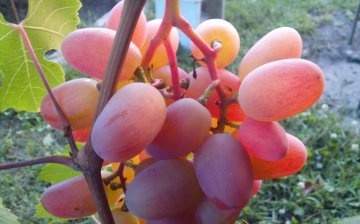
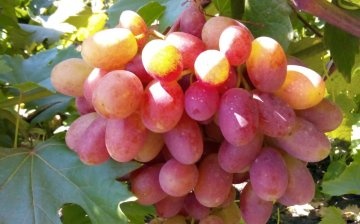
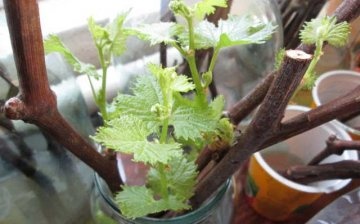
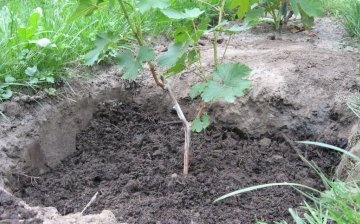
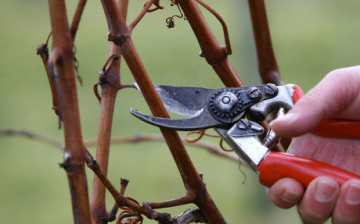
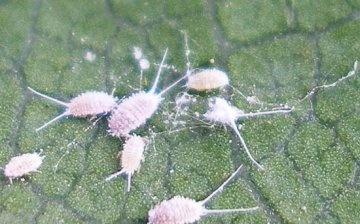








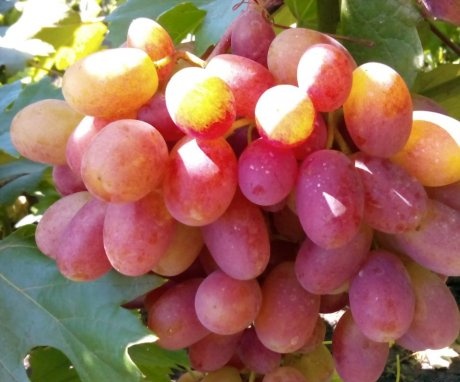
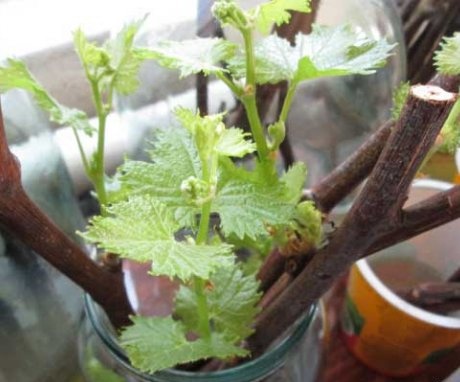
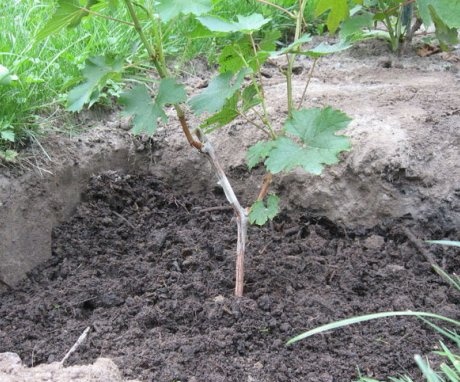

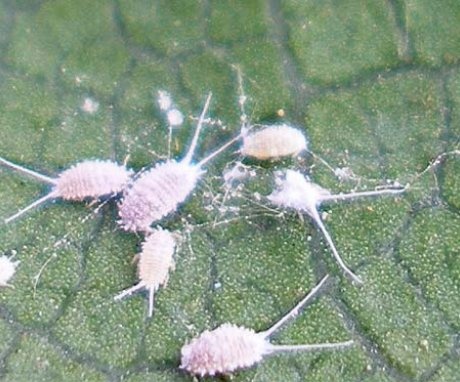

A very good grape variety, but in order for it to start bearing fruit faster, the cutting should not be planted in the ground, but in a plastic bottle with soil, which is placed on the windowsill, and in the spring the grapes are planted in the ground as a seedling with leaves. With this method of cultivation, it begins to bear fruit in the second year.